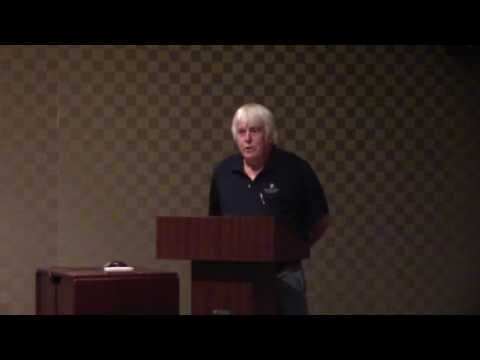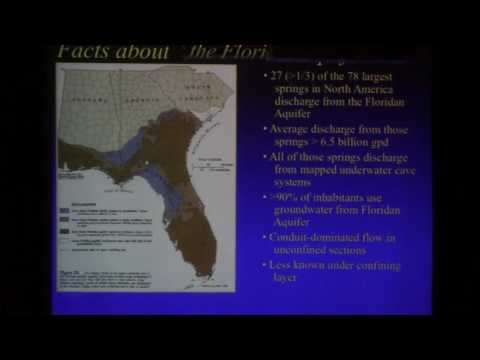You can’t use traditional models for the karst Floridan Aquifer; new and harsher pesticides are expected this summer; but you can help raise native species; and later this month you can go see many of them in Berrien County, plus WWALS monthly outings, the Withlacoochee and Little River Water Trail, and the Alapaha River Water Trail and some WWALS history.

Yeah, coming this summer, and they’re head-scratchers.
All this was at the quarterly WWALS public meeting, this one on Water, Agriculture, and Forestry at Valdosta State University, March 28, 2017.
Here are links to each WWALS video of each talk, with a few notes and a few extra pictures, followed by a WWALS video playlist.
-
Welcome –Gretchen Quarterman, WWALS E.D.

-
About WWALS –WWALS Ambassador Dave Hetzel

Video. Our mission: WWALS Watershed Coalition advocates for conservation and stewardship of the Withlacoochee, Willacoochee, Alapaha, Little, and Suwannee River watersheds in south Georgia and north Florida through education, awareness, environmental monitoring, and citizen activities. About the board, and Frequently Asked Questions. Plus we are now also Suwannee Riverkeeper.
-
Outings and cleanups –Phil Hubbard, Outings Committee Chair, WWALS

Video. Upcoming outings are on the WWALS calendar and we keep track of them and previous ones, too in the Outings and Events spreadsheet. We’re always looking for more members for the Outings Committee.
-
Withlacoochee & Little River Water Trail –John S. Quarterman, WWALS

Video. Two dozen landings, most needing signs at the water and on the road: you can help with the Withlacoochee and Little River Water Trail! Valdosta-Lowndes Tourism Authority already put in $500 towards a fancier brochure than the phamplet we’re currently handing out, and we’ll publish that once we finish getting agreement from all the Georgia counties about landing names and addresses (Florida counties already rationalized all that). Lots more on the WRWT web page.
-
Geology –Prof. Can Denizman, WWALS Science Committee, WWALS

Video. For an executive summary, see this video and transcript: Other aquifer models don’t work for karst Floridan Aquifer –Geology Prof. Can Denizman to Suwannee River Partnership 2017-03-03. For a more formal version, including citations of relevant scientific literature, see the WWALS comments on the North Florida Regional Water Supply Plan (NFRWSP), especially page 5, Data Availability and Model Calibration.

Can Denizman, VSU Geology Professor
Facts About the Floridan Aquifer –Can Denizman
Anatomy of the Floridan Aquifer –Can Denizman
Cross-section along a karst limestone aquifer –Can Denizman
Solution chimneys –Can Denizman
Sullivan Sink at Low Flow –Can Denizman -
Pesticides –Tom Potter, Science Committee Chair, WWALS

Video. Agricultural pesticides bred super-pigweed that they don’t kill, so this summer new-old and much harsher pesticides will be deployed: 2,4-D and Dicamba. Aside from direct drift, you’re far more likely to get exposed from rainfall than through foods. Best time to use these new pesticides: not even on a windless day if anything vulnerable is within binocular sight. And many common vegetables are vulnerable.

Pesticides in the Suwannee River Basin? Tom Potter, WWALS Science Committee Chair
Regional Importance of Agricultural Pesticides –Tom Potter
Pesticides in Rain –Tom Potter
All these pesticides in rain exceed thresholds for harm to aquatic life –Tom Potter
Visual sensitivity for 2,4-D and Dicamba: pepper, tomato, watermelon, and worse –Tom Potter -
Invasive species: Gretchen Quarterman, Master Gardener, WWALS

Video. For a change of pace, she presented largely in questionnaire and discussion format: can you name some native trees? How many butterflies and moth larvae do oak trees support? Native plants are appropriate for the climate and rainfall. They evolved with their companions, the birds and insects that eat them, or the birds that eat the insects that eat them. Goldenrod is not the same as ragweed, and goldenrod is great for insects. There is a native honeysuckle, which is good, not the invasive exotic variety. Can you name some invasive plants? She talked about all this and more and what you can do.
This was the 2014 event at which she first heard Doug Tallamy, with a video of him speaking elsewhere and a link to his book, Bringing Nature Home.
-
Forestry BMPs –Heather Brasell, Gaskins Forest Education Center, WWALS

Video. For somebody who thought she was supposed to speak for ten minutes, she sure did a great long talk. Head on up to the Gaskins Forest Education Center in Berrien County on Earth Day, April 22, 2017, to see all this for yourself; follow this link for details.
She also posted some nice facebook pictures of the speakers.
-
Alapaha River Water Trail –Bret Wagenhorst, WWALS Outings Committee, WWALS

Video. He described the Alapaha River Water Trail from the top (Sheboggy Landing at US 82) to the bottom (the Suwannee River). And he invited everyone to the Fifth Annual BIG Little River Paddle Race at Reed Bingham State Park April 29, 2017, this year with grilling for lunch plus a silent auction.
Gretchen reminded us Heather Brasell already donated towards signs for Sheboggy Landing, and others can also help with that, with money, with labor, with materials, or organize your scout troup or club to make a kiosk.
-
Energy: solar power and pipelines –John S. Quarterman, Suwannee Riverkeeper, WWALS

Video. On the WWALS website, why there is no need for the Sabal Trail pipeline and all about solar power. Thanks for coming!
Here’s a WWALS video playlist:
Videos: Water, Agriculture, and Forestry; WWALS @ VSU 2017-03-28
Quarterly Public Meeting, WWALS Watershed Coalition
Videos by Gretchen Quarterman for WWALS Watershed Coalition (WWALS).
-jsq, John S. Quarterman, Suwannee RIVERKEEPER®
You can join this fun and work by becoming a WWALS member today!
Short Link:









Pingback: Other aquifer models don’t work for karst Floridan Aquifer –Geology Prof. Can Denizman to Suwannee River Partnership 2017-03-03 | WWALS Watershed Coalition (Suwannee RIVERKEEPER®)